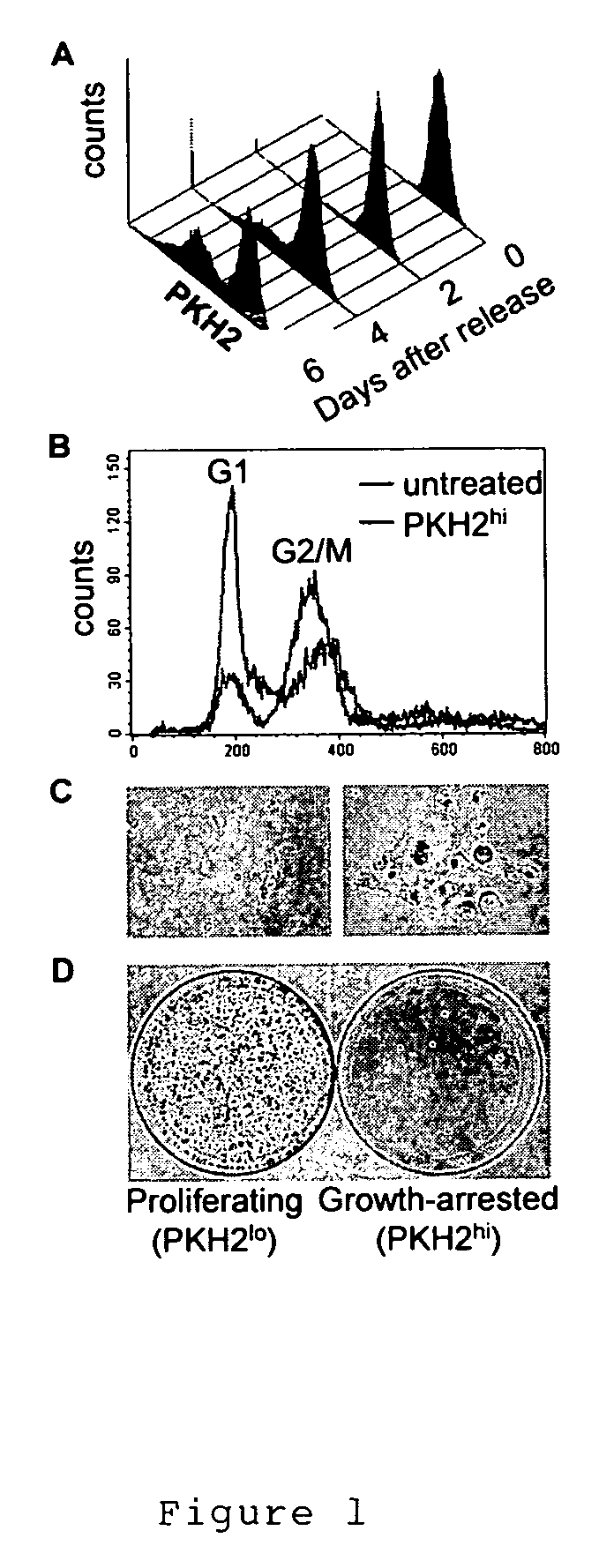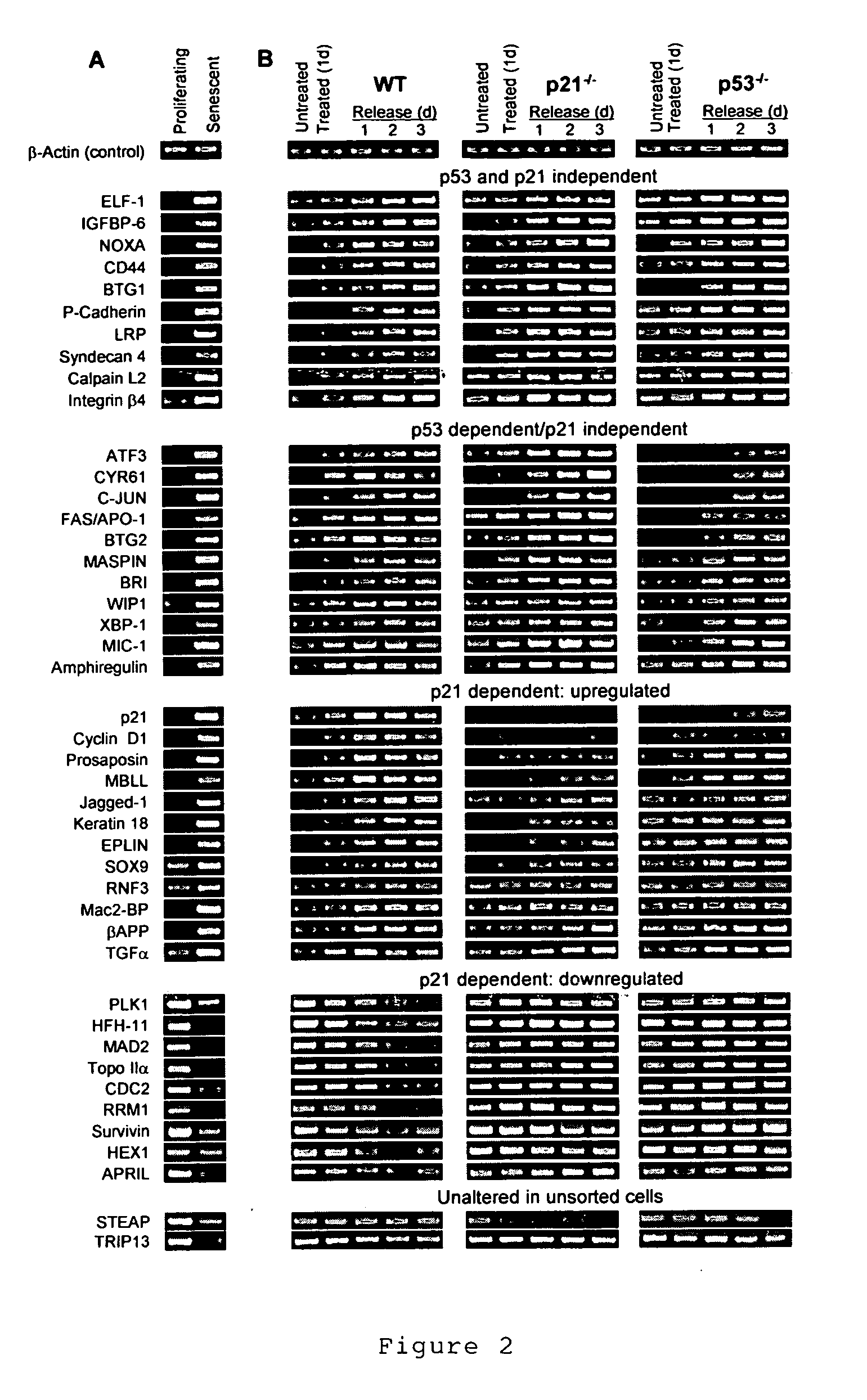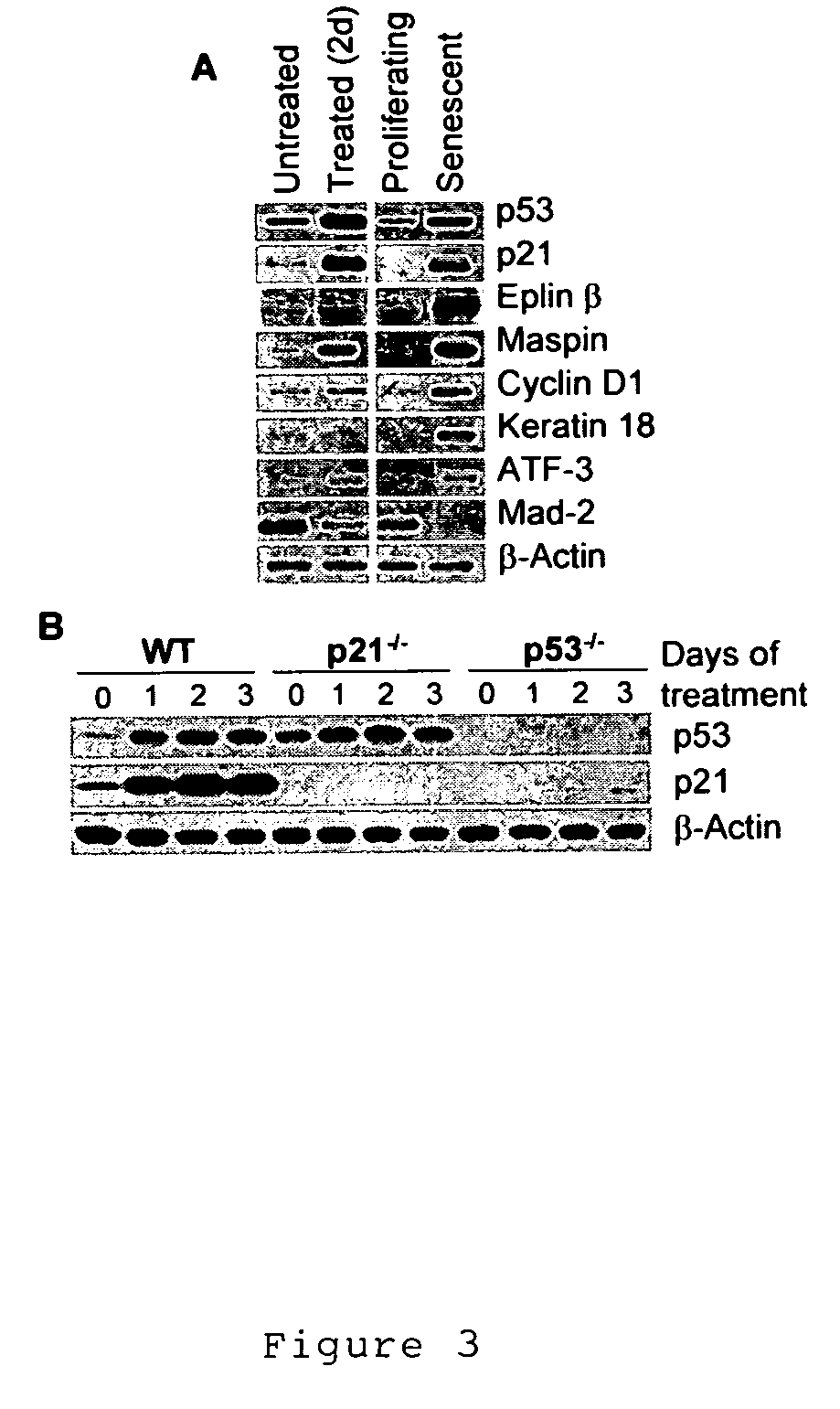Reagents and methods for identifying and modulating expression of tumor senescence genes
a gene and gene technology, applied in the field of changes in cellular gene expression and compounds, can solve problems such as cell death or permanent growth arrest, and achieve the effects of reducing cytotoxicity, reducing cell death, and increasing adhesion and granularity
- Summary
- Abstract
- Description
- Claims
- Application Information
AI Technical Summary
Benefits of technology
Problems solved by technology
Method used
Image
Examples
example 1
Permanent Growth Arrest in Tumor Cells Treated with a Cytotoxic Agent is Associated with the Development of a Senescent Phenotype
[0054]Cytological and gene expression analyses were performed to determine the effects of doxorubicin, a widely used anticancer drug that produces DNA damage by stabilizing a cleavable intermediate complex formed by topoisomerase II in the process of DNA segregation, on human colon cancer cells (HCT 116) in culture.
[0055]HCT116 colon carcinoma cells (Myohanen et al., 1998, Cancer Res. 58: 591-593; Accession No. CCL-247, American Type Culture Collection, Manassas, Va.), including wild-type, p21− / − (clone 80S4) and p53− / − (clone 379.2) cell lines (a gift of Dr. B. Vogelstein, Johns Hopkins University) were grown in Dulbecco Modified Eagle Medium with 10% FC2 serum. Cells were plated at 5×106 cells per 15-cm plate and treated for 24-hr with 200 nM doxorubicin. Thereafter, cells were allowed to recover in drug-free media up to 10 days. For fluorescence-activat...
example 2
Identification of Genes Induced and Repressed in Doxorubicin-Induced Senescence
[0059]The populations of senescent and proliferating cells produced by doxorubicin treatment of HCT 116 cells as described in Example 1 were used to identify differences in gene expression between these cell populations and untreated cells.
[0060]In these experiments, poly(A)+ RNA and protein extracts were prepared from PKH2lo and PKH2hi cell populations, separated in different experiments 6, 9 or 10 days after release from doxorubicin. Fluorescent cDNA probes were synthesized and used for hybridization with the Human UniGEM V 2.0 cDNA microarray and signal analysis (assays were conducted by IncyteGenomics, St. Louis, Mo., as described at that company's web site, www.incyte.com). Changes in gene expression were verified by semi-quantitative reverse transcription-PCR (RT-PCR), essentially as described (Noonan et al., 1990, Proc. Natl. Acad. Sci. USA 87: 7160-7164), using β-actin as an internal normalization...
example 3
Effects of p53 and p21 Knockout on Cytotoxic Drug-Induced Chances in Senescence-Associated Gene Expression
[0071]Many of the genes that show altered expression in senescent HCT116 cells have shown similar changes upon overexpression of p53 (9 downregulated and 11 upregulated genes) or p21 (46 downregulated and 7 upregulated genes) (see Tables 1 and 2). p53 acts as a direct transcriptional activator of many genes (including p21) and indirectly regulates a group of genes that do not have p53-binding sites in their promoters (Komarova et al., 1998, Oncogene 17: 1089-1096; Zhao et al., 1999, Cell Res. 9: 51-59). A prominent class of p53-induced genes encode secreted growth-inhibitory factors, providing paracrine antiproliferative activity (Komarova et al., ibid.). In contrast to p53, p21 is not a transcriptional regulator per se, but it interacts with a broad network of transcription factors, cofactors and mediators of signal transduction (Dotto, 2000, Biochim. Biophys. Acta 1471: M43-M5...
PUM
| Property | Measurement | Unit |
|---|---|---|
| Digital information | aaaaa | aaaaa |
Abstract
Description
Claims
Application Information
 Login to View More
Login to View More - R&D
- Intellectual Property
- Life Sciences
- Materials
- Tech Scout
- Unparalleled Data Quality
- Higher Quality Content
- 60% Fewer Hallucinations
Browse by: Latest US Patents, China's latest patents, Technical Efficacy Thesaurus, Application Domain, Technology Topic, Popular Technical Reports.
© 2025 PatSnap. All rights reserved.Legal|Privacy policy|Modern Slavery Act Transparency Statement|Sitemap|About US| Contact US: help@patsnap.com



